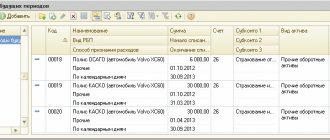Definition of business operations
A business operation (HO) is a procedure for transforming the parameters of property, its location, and resources for the emergence of property.
In addition, economic entities participate in the formation of the company’s own, reserve and borrowed capital, and influence the company’s budget.
Any enterprise must be registered in the accounting department with the appropriate posting. Justification will require documentation proving its necessity. Economic change entails the transformation of some parameters, for example, the size of property and capital may change upward or downward. Equity conversions ultimately result in asset and liability adjustments.
The essence of the business transaction
HO can reflect changes in the assets and liabilities of the balance sheet simultaneously or separately in each of them. Each enterprise must be registered electronically or in paper form for the initial recording of changes. When registering operations, it is necessary to adhere to the order of their occurrence and record events according to this order. Thanks to this technique, the accountant is given the opportunity to:
- maintaining permanent and complete records of all property of the company
- confirmation of each completed transaction with relevant documentation
- application of accounting data for ongoing control activities over the work of the company and for operational management purposes
Primary accounting also maintains financial order in the enterprise, because this information is used to control the legality of ongoing operations and their rationality.
Recognizing types of operations
The accounting system distinguishes 4 types of financial assets, characterized by their impact on assets and liabilities:
- A – balance sheet asset
- P – balance sheet liability
- Od – debit turnover
- Ok – loan turnover
- sch. - check
Type 1 is represented by transactions reflecting a decrease in a balance sheet asset (one item is reduced due to transformations of another). For example, if goods are delivered to the warehouse, money is transferred to the cash register from the current account. These operations are characterized by transforming the structure of property objects and maintaining balance:
A + One count.1 – Ok count.2 = P
Type 2 is characterized by postings relating to the liability. For example, the profit received was used to increase reserve capital. The result of financial accounting in accounting will be an adjustment to the sources of financing and obligations of the company, that is, the final indicators will remain unchanged:
P + Oct count 1 – Odt count 2 =A
Type 3 of entries reflects a parallel increase in liabilities and the value of property, which is due to changes in the final indicators. An example is the acquisition of fixed assets and the issuance of a loan:
A + ODT account 1 = P + Oct account 2
Type 4 is represented by enterprises that contribute to a decrease in total indicators due to entries reflecting a decrease in the equity capital or liabilities of the enterprise due to a decrease in the share of assets:
A – ODT account 1 = P – Oct account 2
CWs can also be classified according to their essence. According to this criterion, there are 3 types of them:
- transactions with funds (cash)
- movement of inventory items (material)
- settlement transactions with counterparties (settlement)
Primary accounting documentation is classified using the same method.
Video about business transactions in accounting:
Tabular classifier of operations in accounting
Business transactions in accounting can be classified as follows (Table 1).
| Impact on the bottom line | Correspondence by Dt | Correspondence by CT |
| Asset conversion | Assets | Assets |
| Passive Conversion | Passive | Passive |
| Increasing assets and liabilities | Assets | Passive |
| Decrease in assets and liabilities | Passive | Assets |
What to do with household operations in accounting:
Determining the date of a business transaction in accounting and tax accounting
Transitional provisions Selected issues of practical application of Resolution No. 55 and the Tax Code In connection with requests received from organizations regarding the application of Resolution of the Ministry of Finance of the Republic of Belarus dated 08.08.2018 No. 55 (hereinafter referred to as Resolution No. 55), paragraph 6 of Article 121, paragraph 8 of Article 168, Part one of paragraph 3 of Article 169 of the Tax Code of the Republic of Belarus (hereinafter referred to as the Tax Code) The Ministry of Finance of the Republic of Belarus, the Ministry of Taxes and Duties of the Republic of Belarus explain the following.
Transitional provisions
If the service (work) is actually provided (performed) before 01/01/2019, and the primary accounting document confirming the completion of this business transaction was drawn up after 01/01/2019, then the business transaction is subject to reflection in accounting as of the date of preparation of this document in the manner established by Article 10 of the Law of the Republic of Belarus dated July 12, 2013 No. 57-Z “On Accounting and Reporting” (hereinafter referred to as the Law on Accounting). The specified procedure is also applied when calculating income tax. Please note that in accordance with paragraph 3 of Article 4 of the Law of the Republic of Belarus dated December 30, 2018 No. 159-Z “On Amendments and Additions to Certain Laws of the Republic of Belarus” in cases where, in accordance with the provisions of Article 1 of this Law [1]
for calculation purposes value added tax, the moment of actual sale of goods (work, services), property rights fell on the period before January 1, 2021, and according to the legislation on the procedure for determining it, in force during the specified period, occurs after December 31, 2021, then value added tax is subject to calculation in 2021 based on the moment of actual sale of such goods (works, services), property rights, determined in accordance with the law in the manner in force before January 1, 2021, but no later than December 31, 2021.
[1] Tax Code of the Republic of Belarus in a new edition.
Selected issues of practical application of Resolution No. 55 and the Tax Code
2.1.
According to Resolution No. 55, the date of reflection in the accounting records of the cost of the service provided is determined depending on whether the customer can use in his activities the result of this service as it is provided during the term of the contract (subclause 1.1.1 of paragraph 1 of Resolution No. 55) or the result of the provision the service can be used by the customer only after completion of its provision (subclause 1.1.2 of clause 1 of resolution No. 55). For example, services for which the date of a business transaction is determined in accordance with subclause 1.1.1 of clause 1 of Resolution No. 55 may include: communication services, housing and communal services; services provided under energy supply contracts; medical services; sanatorium and resort services; architectural and technical supervision services in construction; engineering services and others. For example, services (work), for the provision (performance) of which the date of the business transaction is determined in accordance with subclause 1.1.2 of clause 1 of Resolution No. 55, may include: repair work (with the exception of repair of a construction project); research, development and experimental technological (technological) work; transportation services; services provided under a transport expedition agreement, and others.
Example 1.
The contract for conducting market research, which provides for the indication in the primary accounting document of the day of completion of the provision of the service, defines the period for the provision of the service from February 1, 2021 to March 15, 2021. The provision of the service was completed within the period established by the contract. The primary accounting document indicates the day of completion of the provision of the service - March 15, 2021. In this case, the date of the business transaction is March 15, 2021, and on this date the business transaction is reflected in accounting on the basis of the primary accounting document drawn up in accordance with Article 10 of the Accounting Law.
Example 2.
According to the contract for the performance of equipment repair work, the customer is obliged, with the participation of the contractor, to inspect and verify the work performed and its result within 3 (three) working days from the start date of acceptance, and the day of completion of acceptance of the work must be indicated by the customer in the primary accounting document. The acceptance start date is March 12, 2021, the acceptance completion date indicated in the primary accounting document is March 14, 2021. In this case, the date of the business transaction is March 14, 2019, and on this date the business transaction is reflected in the accounting records on the basis of a primary accounting document drawn up in accordance with Article 10 of the Accounting Law.
Example 3.
The contract for the provision of services for the transportation of goods does not contain a provision indicating in the primary accounting document the day of completion of the provision of the service (service stage), the day of completion of acceptance of the service (service stage). The date of preparation of the primary accounting document confirming the provision of the service (service stage) is March 15, 2021. In this case, the date of the business transaction is March 15, 2021, and on this date the business transaction is reflected in accounting on the basis of the primary accounting document, drawn up in accordance with Article 10 of the Accounting Law.
Based on the provisions of paragraph 8 of Article 168 of the Tax Code for the payer-performer, paragraph 3 of Article 169 of the Tax Code for the payer-customer, business entities use the provisions of subparagraphs 1.1.1 and 1.1.2 of paragraph 1 of Resolution No. 55 when determining revenue from the sale of work (services) ) and costs taken into account for tax purposes.
A similar procedure is applied for the purposes of calculating value added tax, taking into account the specifics established for:
- communication services – clause 17 of Article 121 of the Tax Code;
- services in the field of education – clause 19 of Article 121 of the Tax Code;
- medical services – clause 20 of Article 121 of the Tax Code;
- sanatorium and resort services – clause 14 of Article 121 of the Tax Code;
- transportation services - paragraphs 15-16 of Article 121 of the Tax Code;
- scientific research, experimental design and experimental technological (technological) work - paragraph 7 of Article 121 of the Tax Code (a procedure similar to the procedure for determining the moment of actual implementation when performing construction work is applied).
2.2.
In case of temporary possession and (or) use of property under lease agreements, financial lease (leasing), the date of the business transaction is determined in accordance with subparagraph 1.1.3 of paragraph 1 of Resolution No. 55 in relation to the reflection in accounting of rent, leasing payment in the amount of remuneration ( income) of the lessor and the investment expenses of the lessor included in it, which are not taken into account in the initial cost of the leased asset. For the purposes of calculating value added tax and profit tax, the provisions of paragraphs 9-10 of Article 121 and subparagraph 3.18 of paragraph 3 of Article 174 of the Tax Code are applied, respectively.
2.3. Primary accounting documents containing all the information provided for in part one of paragraph 2 of Article 10 of the Accounting Law are accepted for accounting.
If in the reporting period to which the date of the business transaction relates, the primary accounting document confirming its completion is absent or does not contain all the information provided for in part one of paragraph 2 of Article 10 of the Accounting Law, then in this reporting period the business transaction is not reflected in accounting. In the reporting period when the primary accounting document confirming the completion of a business transaction, containing all the information provided for in part one of paragraph 2 of Article 10 of the Accounting Law, was received by the organization, the business transaction is reflected in accounting in accordance with paragraphs 10-12 of the National Accounting Standard accounting and reporting “Accounting policies of the organization, changes in accounting estimates, errors”, approved by Resolution of the Ministry of Finance of the Republic of Belarus dated December 10, 2013 No. 80.
2.4. Please note that when determining the date of a business transaction, the payer should take into account the deadlines for fulfilling tax obligations. So, for example, if the primary accounting document will be drawn up in one reporting (tax) period, and the date of the business transaction falls on the already expired reporting (tax) period, it is required to fill in information about the understatement (overstatement) of the amounts of taxes subject to payment (refund) on a tax return (calculation) in which incomplete information or errors were found within one tax period, or amendments to the corresponding tax return (calculation) submitted based on the results of the expired reporting (tax) period. Failure to timely prepare primary accounting documents confirming the completion of business transactions may lead to a change in the amount of the tax liability with the accrual of penalties.
3. Determination of the date of completion of certain business transactions not provided for by Resolution No. 55
3.1. The amounts of one-time and periodic payments due under license agreements due to be received by copyright holders (licensors) from users (licensees) are reflected in accounting in the manner established by paragraphs 33, 34 of the Instructions for Accounting of Intangible Assets, approved by Resolution of the Ministry of Finance of the Republic of Belarus dated April 30, 2012 No. 25.
When calculating value added tax and income tax in accordance with paragraph 8 of Article 121 and paragraph 9 of Article 168 of the Tax Code, the day of transfer of property rights, at the choice of the payer, is recognized as: either the last calendar day of each month to which the transfer of property rights relates, and if the transfer of property rights ends before the end of the month - the last day of such transfer; or the day of transfer of property rights, formalized by the primary accounting document.
3.2. The date of the business transaction for construction work carried out under construction contracts is determined in accordance with paragraph 8 of the Instructions for accounting of income and expenses under construction contracts, approved by Resolution of the Ministry of Architecture and Construction of the Republic of Belarus dated September 30, 2011 No. 44. It is determined in a similar way date of recognition of revenue and expenses taken into account for taxation when calculating income tax.
For the purposes of calculating value added tax, the provisions of paragraph 7 of Article 121 of the Tax Code are applied, according to which the day of completion of construction work is recognized as the last day of the month of completion of these works. If the receiving party fails to sign the certificates of work performed for the reporting month before the 10th day (inclusive) of the month following the reporting day, the day the construction work was completed is recognized as the day the receiving party signed the certificates of work performed.
3.3. The date of a business transaction to reimburse the cost of work (services) acquired during the execution of commission agreements, agency agreements, transport expedition agreements, other similar agreements, rental agreements, financial lease (leasing) agreements, gratuitous use agreements, residential rental agreements is the date drawing up a primary accounting document confirming the cost of work (services) subject to reimbursement, in accordance with Article 10 of the Accounting Law.
A similar procedure is applied when the payer decides to apply a value added tax rate of 20 percent in accordance with subparagraphs 9.3 and 9.4 of paragraph 9 of Article 122 of the Tax Code (when reimbursement of relevant expenses within the framework of the execution of lease agreements, financial lease (leasing) agreements), rental of residential premises or contracts for gratuitous use), and, accordingly, the calculation and presentation of amounts of value added tax in relation to the above transactions in the generally established manner.
When calculating income tax, the lessor (lessor, lender, renter) must be guided by paragraph 2 of Article 174 of the Tax Code and the amounts of compensation to be received should be included in non-operating income on the basis of subparagraph 3.18 of paragraph 3 of Article 174 of the Tax Code on the date of reflection of the business transaction in accounting. When calculating income tax, the lessee (lessee, borrower, tenant) is guided by paragraph 3 of Article 169 of the Tax Code and includes in the costs taken into account for taxation expenses in the reporting period in which the business transaction is reflected in accounting, provided that such expenses are not listed in Article 173 of the Tax Code and may reduce taxable profit.
For example, the landlord received an invoice from the housing and communal services provider for February on March 10, 2021. He presented the tenant for reimbursement in the part attributable to the rented area on April 1, 2021, and on the same day the tenant signed the documents. Guided by subclause 3.18 of clause 3 of Article 174 and subclause 3.19 of clause 3 of Article 175 of the Tax Code, the lessor includes the reimbursable cost of purchased housing and communal services as part of non-operating income and expenses, and the tenant includes in the costs taken into account for taxation in April 2021. A similar procedure applies if the payer decides to apply a value added tax rate of 20 percent when reimbursing purchased housing and communal services and the corresponding calculation of value added tax in such a situation.
Deputy Minister of Finance of the Republic of Belarus D.N. Kiyko
Deputy Minister for Taxes and Duties of the Republic of Belarus E.A. Selitskaya Based on materials from the website of the Ministry of Finance of the Republic of Belarus
Principles for recording them in accounting
All financial transactions must be recorded in accordance with the time of their occurrence and monetary value. The moment of the operation shows:
- redistribution of ownership of a certain product, work, service
- making payments
- processing credit loans, etc.
Each financial entity is displayed in accounting as a double entry, since it has a parallel impact on the asset and liability of the balance sheet. The correspondence of accounts represents the dependence of debit and credit. Dt shows the volume of the enterprise’s property, and Kt shows the sources of its formation. The creation of the necessary postings is carried out during the conduct of operations.
Each account has its own number. The double entry method ensures that changes in debit and credit are equivalent and helps determine the nature of the posting. If different values of assets and liabilities are revealed, then there is an error in accounting.
Samples of postings for business transactions
As examples, consider the following wiring:
- As a result of the transaction for the shipment of goods, an amount of 7,600 rubles was received into the account of Radif OJSC. This operation is reflected by the posting: Dt 51-Kt 62, the amount of XO is 7,600 rubles. The final balance sheet indicators will remain unchanged, while the value of the current account will increase by 7,600 rubles, and the “Settlements with customers” account will decrease by the same amount.
- Raw materials worth 3,800 rubles were shipped to warehouse storage at Radif OJSC. This operation caused an adjustment to the balance sheet totals with the following posting: Dt 41-Kt 60, amount - 3,800 rubles.
- If, based on the results of production activities, the company made a profit and management needs to determine interest in the amount of 15,600 rubles, then the financial statement will be recorded by posting: Dt 84-Kt 75, amount 15,600 rubles. The changes will affect the liability, but the total values will remain the same.
- OJSC Radif paid the supplier for raw materials, the transaction amount was 5,400 rubles. A posting is created: Dt 60-Kt 51, amount 5,400 rubles.
Reflection of business transactions on accounting accounts.
“General production expenses” RUB 15,000.
K-t sch. “Settlements with personnel for wages” 35,000 rubles.
This operation will be reflected in the accounts as follows:
This complex accounting entry can be represented in two simple ones:
1. Dt count. “Main production” 20,000 rub.
K-t sch. “Settlements with personnel for wages” 20,000 rubles.
2. Dt count. “Main production” 15,000 rub.
K-t sch. “Settlements with personnel for wages” 15,000 rubles.
When compiling complex entries, it should be borne in mind that only such entries are correct in which the correspondence of the accounts is clearly expressed. Therefore, it is impossible to prepare accounting records that simultaneously affect several debited and credited accounts.
Accounting records are made only on the basis of documents that record the content of business transactions.
Registration of a business transaction
To record chemical weapons at enterprises of all forms of ownership and with any production volumes, special journals are used. They record every transaction carried out by the company. The following data must be recorded in the log:
- XO number
- the moment of its implementation
- information from primary documentation about chemical equipment
- operation description
- posting in accounting
- its monetary value
Some aspects of registration in different organizations may differ, but the basic principle remains the same:
- Each subsequent registration of a chemical enterprise is carried out from a new line
- the transaction number in order, the date of its completion and description are indicated
- the numbers of the corresponding accounts and the transaction amount are displayed
- the number of the identification document is indicated
The accounting department begins filling out the journal after generating entries in the accounting documentation.
The procedure for creating analytical accounting
The organization of analytical accounting provides for the specifics of accounting objects that take place in the enterprise. For example, the receipt of goods into a trading organization is reflected by the formation of a posting: D-t 41.01 K-t 60 ¬– Goods arrived at the warehouse
When transferring goods to retail trade, the following entry is generated: D-t 41.02 K-t 41.01 – Goods transferred to retail.
To detail the points of sale of goods, for example, stores, additional second-order subaccounts are opened to account 41.02: 41.02.1 – goods in store 1; 02.41.2 – goods in store 2.
Analytical accounting in the case of accounting for goods is the nomenclature items of such goods, for example:
- sugar by weight;
- packaged sugar 0.9 kg;
- premium wheat flour 2 kg;
- wheat flour 2nd grade 1 kg;
- rye flour 2 kg, etc.
When a new item is received for the first time in the accounting system, a new entry is created in analytical accounting. This example reflects quantitative-cumulative analytical accounting, since such accounting reflects the indicators of amount and quantity, for example:
- sugar by weight: amount 2380 rub.; quantity 52 kg.
- packaged sugar 0.9 kg: amount 1,760 rubles; quantity 35 pcs.
An example of analytical accounting, when only amounts are reflected in the accounting, is payroll accounting. In this case, analytics is carried out for each employee. For example: Salaries of management personnel were accrued in the amount of 121,000 rubles. Generated wiring: D-t 26 K-t 70
Analytical accounting in the case of accounting for payroll calculations is the names of employees, for example:
- director Aksenov V.N. – 35600 rub.
- chief accountant Grishaeva A.M. – 32800 rub.
- accountant Gnezdilova T.V. – 28400 rub.
- cashier Vatrushina E.A. – 24300 rub.
In this case, analytical accounting is carried out only in total terms. Accordingly, to analyze the status of settlements, this accounting allows you to see the amount of wage arrears for each employee.
Primary documentation for recording
With the help of this documentation, you can certify the fact of the accomplishment of the chemical act and ensure the reliability of your employees. Some types of primary documents are unified, others are created by payers personally.
Primary documentation, reflecting the implementation of the economic organization and being the basis for creating accounting entries, can be generated both by the accounting service and by management, middle managers, and so on. These documents must contain certain information:
- Name
- signatures of officials
- information about the responsible employee
- deal name
- information about business entities involved in the transaction
- information about the entity of the enterprise
- date of registration of documentation
When preparing documentation, it is possible to make necessary amendments to the unified forms. But there are exceptions, for example, cash documents.
Thus, all financial entities in accounting must be accompanied by postings, which are the basis for reporting. The latter, in turn, allows you to analyze the financial results of the company. In addition, it contributes to the development of correct management decisions.
Top
Write your question in the form below
New Law No. 402-FZ “On Accounting”
Comments:The new law 402-FZ introduced fundamentally new provisions devoted to the regulation of accounting (Chapter 3).
The provisions of Chapter 3 of Law 402-FZ do not directly affect the work of an accountant; this chapter defines principles, documents, and also identifies subjects in the field of accounting regulation.
According to Art. 20 of Law N 402-FZ, accounting regulation is carried out according to the principles: compliance of federal and industry standards with the needs of users of accounting (financial) statements; unity of accounting requirements; using International Standards as the basis for the development of federal and industry standards.
In Art. 3 of Law N 402-FZ defines an international standard as an accounting standard, the application of which is customary in international business, regardless of the specific name of such a standard. An accounting standard is a document that establishes the minimum necessary accounting requirements and acceptable methods of accounting.
Now federal and industry standards will have to be developed that regulate accounting and are mandatory for use. At their core, these are currently existing PBUs that have undergone significant modifications and amendments and are as close as possible to IFRS.
Federal standards, regardless of the type of economic activity, establish, in particular, the procedure for classifying accounting items, the conditions for their acceptance and write-off, the composition, content and procedure for generating information disclosed in the accounting (financial) statements (clause 3 of Article 21 of Law No. 402- Federal Law). Industry standards determine the specifics of the application of federal standards in certain types of economic activity (clause 5 of Article 21 of Law No. 402-FZ).
The development of standards will be carried out by the Ministry of Finance, the Central Bank of the Russian Federation and, what is extremely important, for the first time - subjects of non-state regulation of accounting: self-regulatory organizations, including self-regulatory organizations of entrepreneurs, other users of accounting (financial) statements, auditors interested in taking part in the regulation of accounting, as well as their associations and unions and other non-profit organizations pursuing the goals of accounting development. This is mentioned in Art. Art. 22 – 24 of Law N 402-FZ.
The publication of developed draft federal standards in print and on the Internet and their public discussion by interested parties are becoming increasingly important. As a result, these projects will have to be finalized by the developers and adopted by the authorized federal body, taking into account comments received in writing from interested parties. This procedure is set out in Art. Art. 26, 27 of Law No. 402-FZ.






